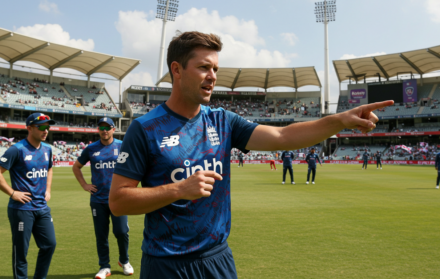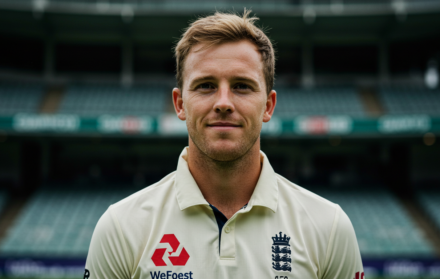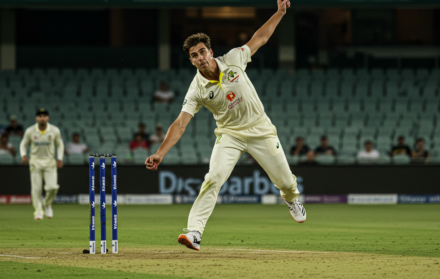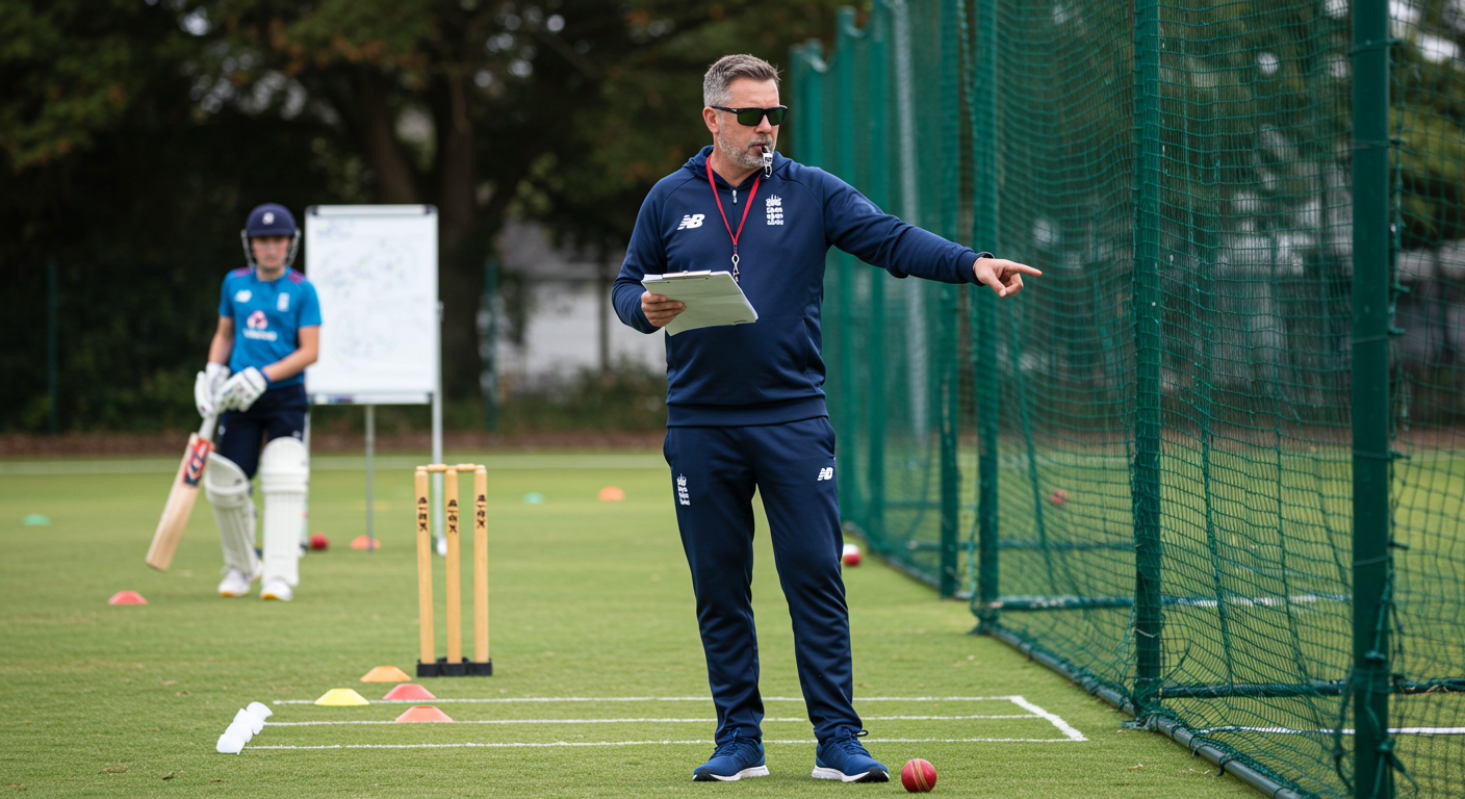
Cricket Coaching Certifications: What You Need to Know
Behind every great cricketer is a cricket coach who helped shape their technique, confidence, and game sense. But coaching isn’t just about passion—it’s a structured profession with recognised qualifications and career pathways. If you’re looking to train the next generation or simply improve your knowledge of the game, understanding cricket coaching certifications is essential.
From grassroots levels to elite programmes, governing bodies across the world offer tiered certification systems to ensure coaches are properly trained in areas like technical skill, communication, child protection, and performance planning. Whether you’re based in the UK, Australia, India or elsewhere, there’s a path to follow.
In this guide, we’ll explore the main types of coaching qualifications, what each level entails, who offers them, and how to get started. Whether you’re a club parent, an aspiring academy coach, or someone looking to break into professional pathways, here’s what you need to know.
1. ECB Coaching Pathway (England and Wales)
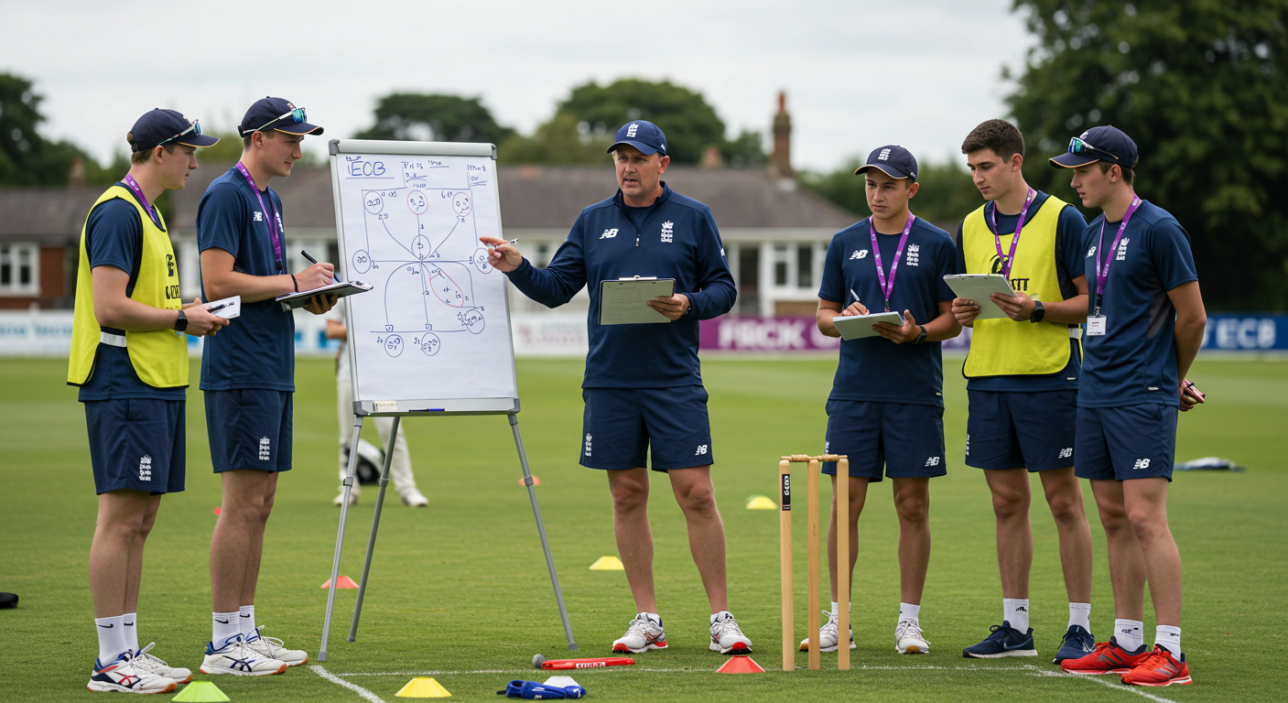
The England and Wales Cricket Board (ECB) offers one of the most comprehensive coaching frameworks in the world. Their tiered structure is designed to support coaches from beginners working with juniors, right up to those coaching first-class and international players.
The entry point is ECB Foundation I Coach, ideal for volunteers and newcomers. It covers basic principles—how to organise sessions, keep them fun, and introduce key skills. It’s also designed to be inclusive and accessible, with no prior experience needed.
Next is ECB Core Coach, previously called Level 2. This certification is for coaches delivering sessions independently and developing players technically and tactically. It includes both in-person and online modules, with a focus on safeguarding, player development, and reflective practice.
For those eyeing elite roles, the ECB Advanced Coach and ECB Level 4 Master Coach follow. These require previous experience and applications are selective. They involve intense modules on high-performance environments, analytics, and leadership.
All courses are run through County Cricket Boards, with resources available via the ECB website. For anyone coaching in England or Wales, this pathway is the gold standard—and essential for working in club, county, or school systems.
2. Cricket Australia Coaching Accreditation
Cricket Australia (CA) operates a nationally recognised system known as the Community Coach Accreditation Framework, catering to various levels of player and coach development across the country.
It begins with the Community Coach course, aimed at parents, teachers, and volunteers working with young players in schools and clubs. It focuses on creating enjoyable sessions, basic safety, and how to introduce the game to beginners. It’s often delivered as a short online or blended learning programme.
Next is the Representative Coach level, suitable for those working with talented junior and senior players in club or state pathways. It builds on tactical development, team culture, and session planning. Coaches must demonstrate coaching competency and attend face-to-face workshops and assessments.
Beyond this, CA offers the High Performance Coaching Course, a by-application programme for coaches working in elite environments. It’s rigorous, with coursework covering mental skills, biomechanics, game analysis, and leadership. Candidates often work in the Big Bash League, national teams, or performance academies.
Cricket Australia’s model is based on continual development, with ongoing CPD encouraged. Accreditation is linked to the Australian Sports Commission’s national coaching framework, meaning it carries weight across multiple sports.
If you’re in Australia and serious about coaching, this structure offers clear progression, backed by a globally respected cricketing body.
3. BCCI Coaching Certification (India)
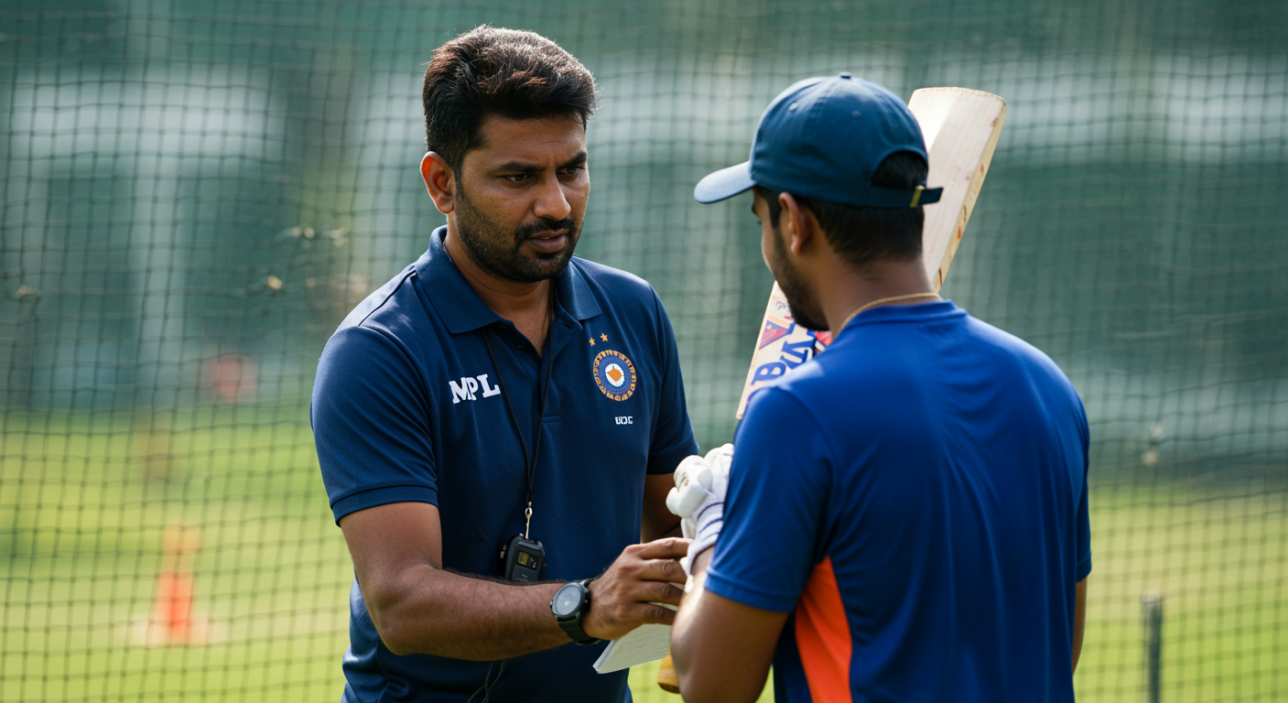
India’s vast cricket ecosystem means demand for qualified coaches is enormous—from grassroots academies to Ranji Trophy and IPL franchises. The Board of Control for Cricket in India (BCCI), through the National Cricket Academy (NCA) in Bengaluru, offers structured coaching certification programmes designed to feed into every level of the game.
The pathway begins with the Level 1 (NCA Certified Coach) course. Candidates must be former first-class cricketers or recommended by a state association. The course includes practical modules on batting, bowling, fielding, and planning structured coaching sessions. Unlike some systems, BCCI’s entry-level is not open to the general public—there’s an emphasis on prior playing experience.
Level 2 is aimed at coaches working in more competitive environments, such as state youth sides or junior zonal squads. It delves into biomechanics, injury prevention, match preparation, and team strategy. Assessments include on-field demonstration and classroom-based learning.
At the top is the Level 3 High Performance Coach programme, reserved for highly experienced coaches working in elite settings. It is invitation-only, often attended by coaches from the IPL, India A, or national squads.
The BCCI pathway is rigorous, exclusive, and built on a strong tradition of former players entering the coaching system. While less accessible than ECB or CA routes, it reflects India’s unique emphasis on lived playing experience over theoretical entry.
4. ICC Global Coaching Framework
To unify standards across associate nations, the International Cricket Council (ICC) introduced its own Global Coaching Framework, providing a scalable structure for countries without domestic certification systems.
The ICC pathway comprises four levels: Introduction to Cricket, Level 1, Level 2, and High Performance (Level 3). The framework mirrors other national models but adapts to suit the needs of developing cricket nations.
Introduction to Cricket is designed for volunteers and schoolteachers introducing cricket at a grassroots level. It covers the basics—safety, engagement, and how to run small-sided games. It’s often delivered as a one-day workshop or online module and is open to anyone.
ICC Level 1 focuses on new coaches working with juniors or recreational adult teams. It introduces session planning, skill development, and the basics of technical correction. Level 2 then expands into performance coaching, game understanding, and athlete management.
ICC High Performance Level 3, like its counterparts in England or Australia, is invitation-only and designed for those coaching national teams or elite youth programmes. It includes leadership development, video analysis, sports psychology, and long-term athlete planning.
This framework is essential for associate nations like Nepal, USA, UAE, and Namibia—countries with passionate followings but limited access to elite infrastructure. It ensures their coaches meet global standards and can grow local talent effectively.
For anyone coaching outside the big three cricketing nations, the ICC programme is often the best—and only—pathway available.
5. Continuing Professional Development (CPD) for Cricket Coaches
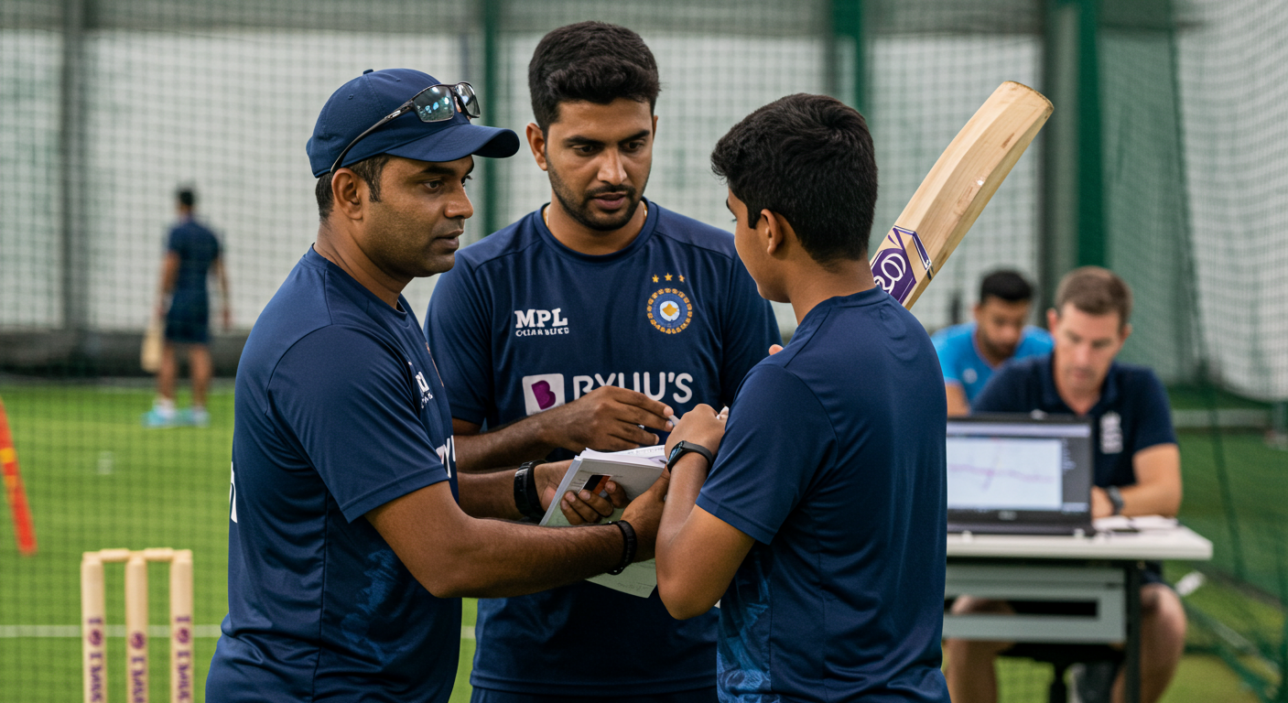
Getting certified is only the beginning. For any coach hoping to stay effective and relevant, Continuing Professional Development (CPD) is essential. Cricket, like all sports, evolves—new technologies, tactical shifts, and sports science breakthroughs demand that coaches stay sharp.
Most national cricket boards, including the ECB, Cricket Australia, and ICC, offer CPD opportunities such as refresher courses, webinars, workshops, and mentoring. These may focus on areas like video analysis, injury management, mental conditioning, or coaching children with special educational needs.
In the UK, ECB coaches are encouraged to complete Safeguarding Young Cricketers and First Aid in Sport updates regularly. In Australia, coaches can join the Community of Practice, which connects them with peers and specialists through forums and online training events.
Technology plays a growing role too. Mobile apps, online coach libraries, and remote assessment tools are making development more flexible. The CoachED platform, launched in South Africa, is one example of a digital space offering global CPD access.
CPD is more than a tick-box exercise—it builds confidence, keeps your sessions fresh, and ensures players receive the best possible guidance. The best coaches don’t just teach—they learn continually, and CPD is how they do it.
6. How to Choose the Right Certification Path
With several pathways and governing bodies offering structured courses, choosing the right cricket coaching certification depends on your location, coaching goals, and level of experience.
If you’re in the UK and plan to coach club juniors or schoolchildren, the ECB Foundation I is the obvious starting point. It’s affordable, widely available, and builds directly into the ECB’s nationally recognised pathway. For Australians, the Community Coach or Representative Coach programmes offer similarly clear structures with flexibility based on your environment.
In India, however, access is more restricted. If you haven’t played professional or first-class cricket, BCCI certification may not be an option. In that case, regional academies or private coaching programmes—some of which follow ICC guidelines—can be an alternative.
For coaches outside Test-playing nations, the ICC Global Coaching Framework is often the best entry point. It’s used in emerging cricket markets like the USA, Nepal, Germany, and Kenya, and is internationally recognised.
Beyond geography, consider your long-term aim. Want to coach elite youth talent? You’ll need to follow the performance track, eventually working towards Level 3 qualifications. Just looking to help your local club thrive? A Level 1 with strong CPD engagement might be all you need.
Certification is about credibility—but it’s also about confidence. Choose a programme that fits your context, and make sure it supports the kind of coach you want to become.
7. Ethics, Safeguarding, and Coach Responsibility
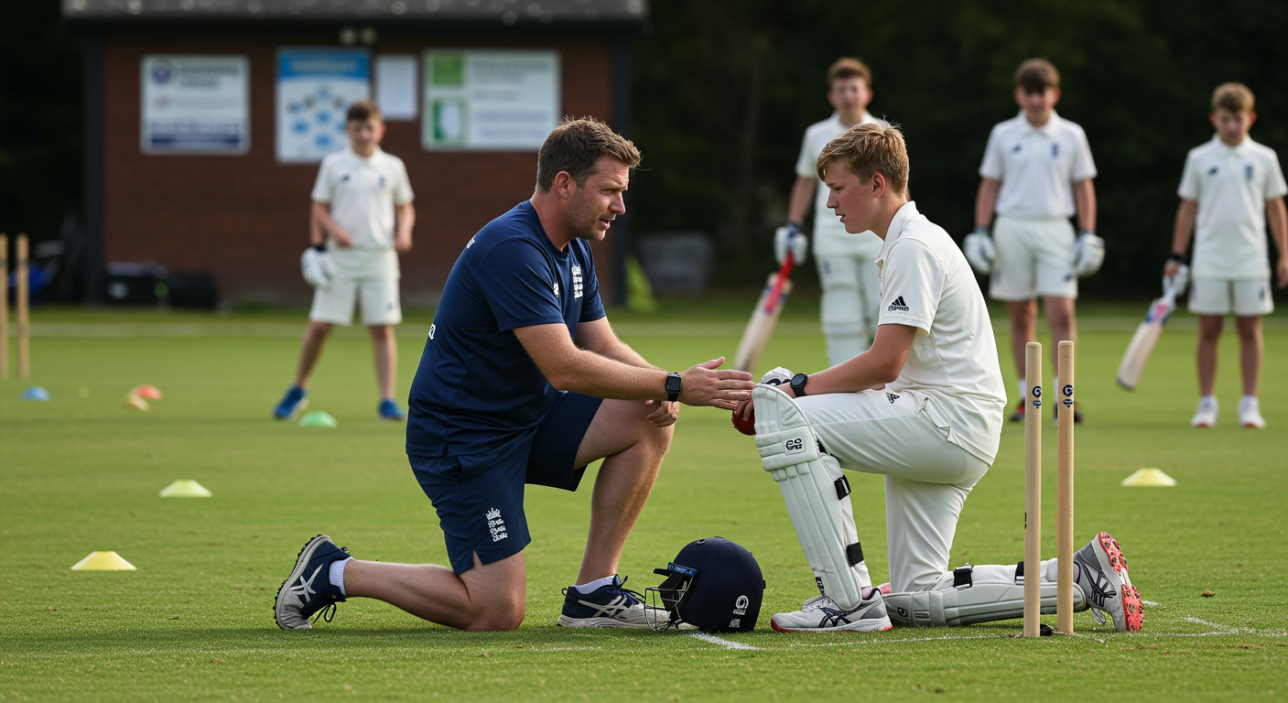
Becoming a certified cricket coach isn’t just about technique and tactics—it’s also about responsibility. Every recognised coaching course, from the ECB to the ICC, includes components on ethics, safeguarding, and child protection. These are non-negotiable areas, especially if you’re working with youth or vulnerable players.
In the UK, ECB coaches must complete Safeguarding and Protecting Children modules and pass a Disclosure and Barring Service (DBS) check. This ensures they can be trusted in roles involving minors. Similar policies exist in Australia, where Working With Children Checks are mandatory for most coaching positions.
The ethical framework extends to inclusivity, fairness, and player welfare. Coaches are taught how to create safe, supportive environments, manage disciplinary issues, and recognise signs of burnout, bullying, or abuse.
Courses also address coach-player boundaries, social media conduct, and professional behaviour—vital in a world where reputations are shaped online.
Ultimately, coaching is about more than cricket. It’s about building trust and helping players grow as individuals. A coach might be the most influential adult in a young player’s life. That’s why ethics and safeguarding aren’t side topics—they’re at the very heart of the profession.
8. Cost, Access, and Financial Support
One of the most common barriers to becoming a certified cricket coach is cost. While entry-level courses like ECB’s Foundation I or ICC’s Level 1 are generally affordable (often between £50–£150), higher-level qualifications can run into hundreds of pounds or more, especially when travel, accommodation, and materials are factored in.
The ECB, Cricket Australia, and ICC affiliates sometimes offer subsidies through clubs, schools, or regional boards. Local associations may provide partial funding, especially if you’re volunteering for a youth programme or a community project.
Some initiatives focus on improving diversity in coaching by offering grants for women, ethnic minorities, and underrepresented groups. These are well worth exploring, particularly if you’re applying from a non-traditional background or region.
Online delivery has helped reduce costs too. During the pandemic, many governing bodies shifted to blended learning models, allowing coaches to complete theoretical components online before attending in-person assessments.
Still, access can vary significantly depending on location. If you’re based in an associate nation or a rural area, availability of courses may be limited. That’s where the ICC framework and private academies can provide flexible alternatives.
Before enrolling, check if your club, county, or national board offers funding. With the right support, coaching can be not just accessible—but truly transformative.
Conclusion: Why Cricket Coaching Certifications Matter More Than Ever

In today’s fast-evolving cricket landscape, coaching is no longer an informal art passed down in nets and clubhouses. It’s a profession—structured, respected, and vital to the game’s future. Whether you’re nurturing five-year-olds or mentoring national prospects, cricket coaching certifications give you the knowledge, tools, and credibility to do it right.
These qualifications go beyond drills and techniques. They offer insight into safeguarding, communication, psychology, and long-term player development. They also open doors—into schools, clubs, academies, and even national setups—by validating your expertise.
But perhaps most importantly, certification is about building trust. Parents trust certified coaches. Clubs rely on them. Players grow under their guidance. In a sport rooted in tradition but looking forward to the future, coaches play a critical role in bridging generations and shaping culture.
If you’re thinking of coaching, don’t leave it to guesswork. Invest in training, stay up to date, and choose the path that suits your goals and your community. The game needs more great coaches—and the journey starts with certification.

